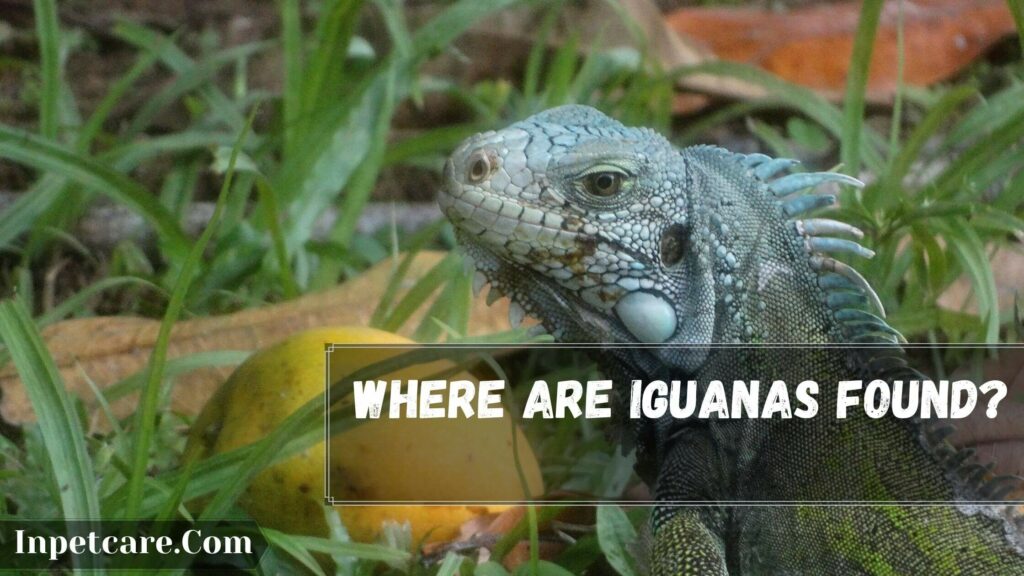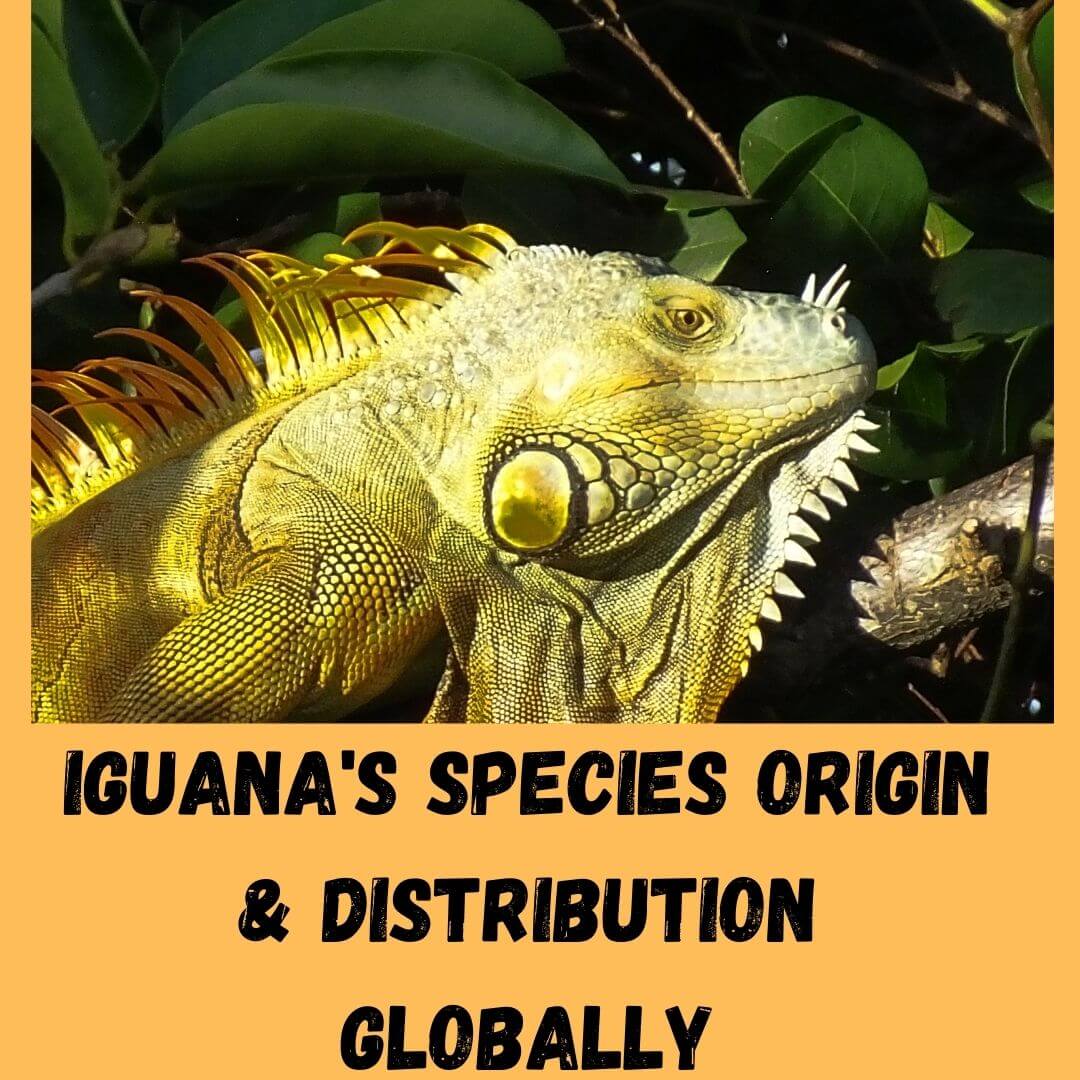Where Are Iguanas Found? Iguana is found in many parts of the world and is native to areas with lush rainforests. Iguana ranges from Southern Mexico go to Central Brazil. They also hail from the Caribbean Island and the Dominican republic. They are also found in Paraguay and Bolivia.
Hence, in this article, we will not only learn about Where Are Iguanas Found but also the type of Iguana found in a particular location. You will also learn about iguanas, the increasing population, and why. They prefer warm temperatures and are cold-blooded react as they cannot regulate their body temperature on their own.
The usually on the external source of heat to regulate their body temperature. In captivity, you will need to provide a heat source in the enclosure. Do you know that Iguana is considered an invasive species in some parts, including Puerto Rico and Florida?
Iguana spends most of their time in the trees as they are arboreal reptiles. They also prefer living near water sources, so they have an easy way out when there is Predator. Iguanas are known to dive into the water when they feel threatened.
They rarely come out of their hidings or tree unless they need to lay eggs or mate. They also come out of the tree if it needs to relocate itself. Iguana love to forage on plant matters, small insects, leaves, roots, flowers, and leafy green. They are primary herbivorous but are opportunities to eat whatever they sight, or they can find in the world. Now, let’s talk about Where iguanas are found.
Post Contents
Where Are Iguanas Found?

Mexico
There are almost 19 species of Iguana found in Mexico. Adding to this, Iguana has become a cultural staple and a common ingredient in Mexican cushions. Many different Iguana species inhibit American countries, but the exact number depends upon which taxonomic authority you rely on. I have tried my best to be as detailed as possible and mentioned a few Iguana species from Mexico.
- Green Iguana
- Isla San Pedro Nolasco Spiny-Tailed Iguana
- Desert Iguana
- Western Spiny-Tailed Iguana
- Club Tail Iguana
- Mexican Spiny-Tailed Iguana
- Common Chuckwalla
- Sonoran Spiny-tailed Iguana
- Black Spiny-Tailed Iguana
- Yucatan Spiny-Tailed Iguana
- Balsas Spiny-Tailed Iguana
- Oaxacan Spiny-Tailed Iguana
- Cape Spiny-Tailed Iguana
Central & South America
One of the most common species of Iguana is the green Iguana that hails from Central and Southern America. Green iguanas are also known as American Iguana. Iguanas are primitive herbivores and a large species of lizard.
They range over a large geographical area and are native to Paraguay and Southern Brazil. They can also be found as far not as Mexico and have been introduced from South America to Paraguay. In the United States, Iguana is considered an invasive species are, known as bamboo chicken or chicken of the trees.
Common species of Iguana exist in South Florida, and killing them is completely legal. Some federal populations also exist in Rio grand valley of texas, the US Virgin Islands, Hawaii, and Florida keys.
Surprisingly, Iguanas had also colonized the island of Anguilla after being arrived in 1995 when they were introduced to the rafting program. Below are a few Iguana species that hails from southern and Central America.
- Chuckwalla iguanas
- West Indian iguana Green Iguanas
Caribbean
Eastern Caribbean is also a house of a healthy population of Iguana. For a long time, only 2 Iguana species were thought to be living in the eastern Caribbean, but recently, a few new kinds are yet to be discovered. There are mostly two types of Iguana found in the Caribbean mentioned below.
- Antillean Iguana
- Green Iguanas
Are Iguanas Native to Florida?

No. Iguanas are not native to Florida, even though they reside in the sunshine state. When ships carrying fruit from South America came to the dock, Iguana loved the tropical climate of Florida and adapted well to its living condition in this state. Iguana is being captured and sold as pets.
They’re sold for meat purposes in different countries. At first, Iguanas were very popular as a pet which had become a trend, but later on, people released them when they realized how demanding Iguana could be when cared for. This has led the Iguana population to increase in the wild.
Therefore, Iguana is considered invasive in Florida, causing many problems for urban areas and people living nearby. Iguanas usually dig holes in people’s yards or gardens of up to 6 feet to lay their eggs. Plus, Iguana also digs under the foundation of a building which causes collapse, soil erosion, and other damages.
This is why the government was forced two release a clear permit to allow people to hunt Iguana humanely. Iguana is also a proficient swimmer; they also crawl through sewer systems and emerge in residential toilets. Let’s take a quick look at some frequently asked questions on Iguana.
Interesting Further Reading
- How Fast Can Iguanas Run? 6 Amazing Facts
- Iguana Vs Monitor Lizard: 7 Key Differences
- Can Iguanas Live With Other Reptiles?
FAQ
Conclusion
Iguanas are native to areas having tropical rainforests and prefer warm temperatures; they are widely distributed in various parts of the world. At first, Iguanas were introduced as pets in the United States, and later on, Iguana became invasive species.
The increasing population of Iguana is continuously destroying by borrowing and eating vegetation. If you have an Iguana and can no longer take care of it, avoid releasing it into the Wild as it is strongly discouraging. In many areas of the United States, releasing an Iguana is illegal.
Many animal rescue centers and exotic pet amnesty programs can help you surrender your pet safely and legally. By now, you have all the Ideas about where iguanas are found and if they’re native to Florida or not. I have tried my best to give you all the information regarding Iguana and where they hail from.
Iguanas are native to areas with tropical rainforests. They were introduced to the United States and are commonly kept as pets by reptile enthusiasts. In the Wild in the United States, they are considered nuisance animals due to the destruction that they cause by burrowing and eating vegetation.
If you have an iguana that you can no longer care for, releasing it into the Wild is strongly discouraged. In many areas, it is also illegal to do. Contact the FWC’s Exotic Pet Amnesty Program for information on how to legally and safely surrender your Iguana.

94% of pet owners say their animal pal makes them smile more than once a day. In 2007, I realized that I was made for saving Animals. My father is a Vet, and I think every pet deserves one. I started this blog, “InPetCare”, in 2019 with my father to enlighten a wider audience.
